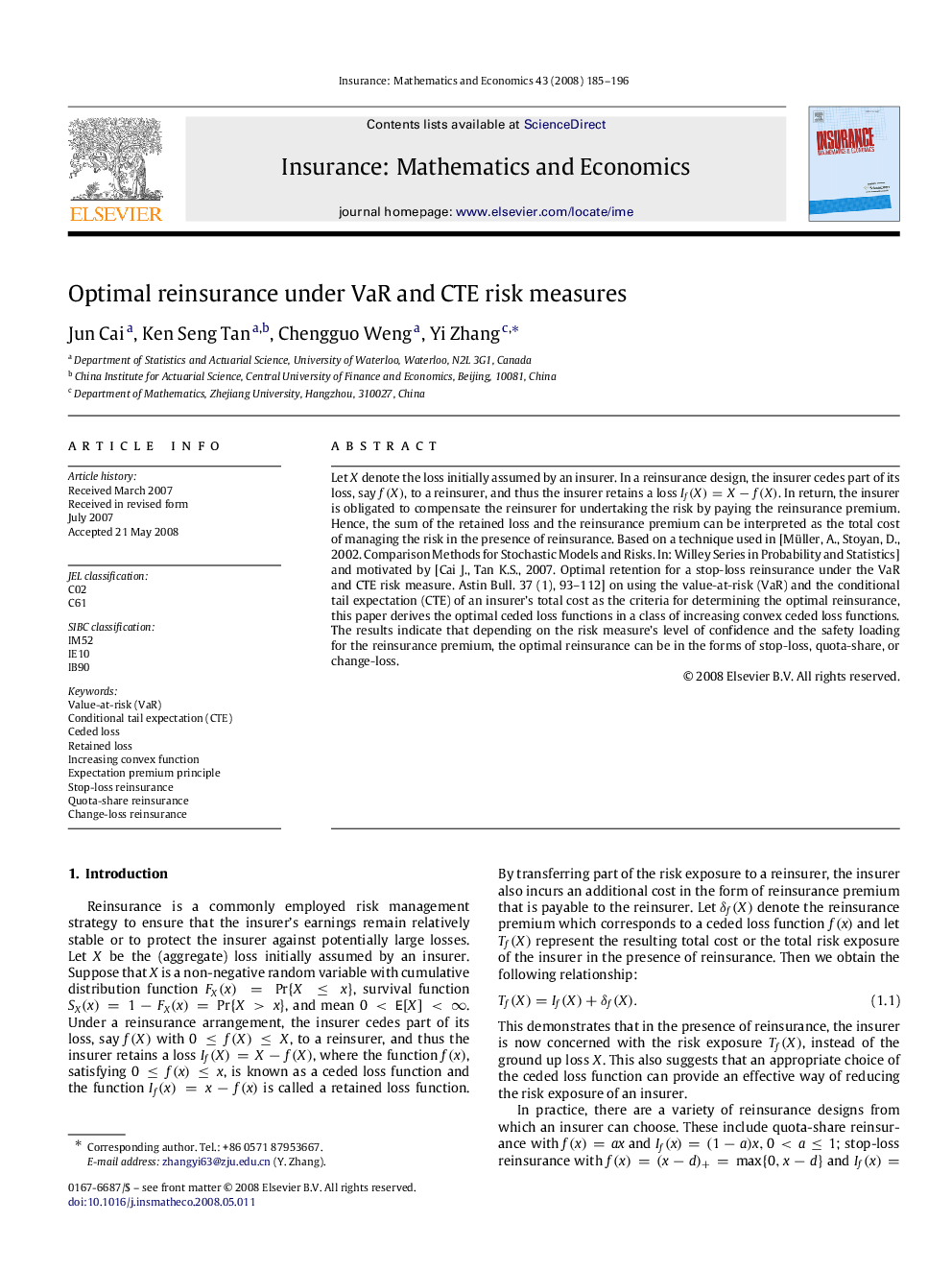| Article ID | Journal | Published Year | Pages | File Type |
|---|---|---|---|---|
| 5077465 | Insurance: Mathematics and Economics | 2008 | 12 Pages |
Abstract
Let X denote the loss initially assumed by an insurer. In a reinsurance design, the insurer cedes part of its loss, say f(X), to a reinsurer, and thus the insurer retains a loss If(X)=Xâf(X). In return, the insurer is obligated to compensate the reinsurer for undertaking the risk by paying the reinsurance premium. Hence, the sum of the retained loss and the reinsurance premium can be interpreted as the total cost of managing the risk in the presence of reinsurance. Based on a technique used in [Müller, A., Stoyan, D., 2002. Comparison Methods for Stochastic Models and Risks. In: Willey Series in Probability and Statistics] and motivated by [Cai J., Tan K.S., 2007. Optimal retention for a stop-loss reinsurance under the VaR and CTE risk measure. Astin Bull. 37 (1), 93-112] on using the value-at-risk (VaR) and the conditional tail expectation (CTE) of an insurer's total cost as the criteria for determining the optimal reinsurance, this paper derives the optimal ceded loss functions in a class of increasing convex ceded loss functions. The results indicate that depending on the risk measure's level of confidence and the safety loading for the reinsurance premium, the optimal reinsurance can be in the forms of stop-loss, quota-share, or change-loss.
Keywords
Related Topics
Physical Sciences and Engineering
Mathematics
Statistics and Probability
Authors
Jun Cai, Ken Seng Tan, Chengguo Weng, Yi Zhang,
